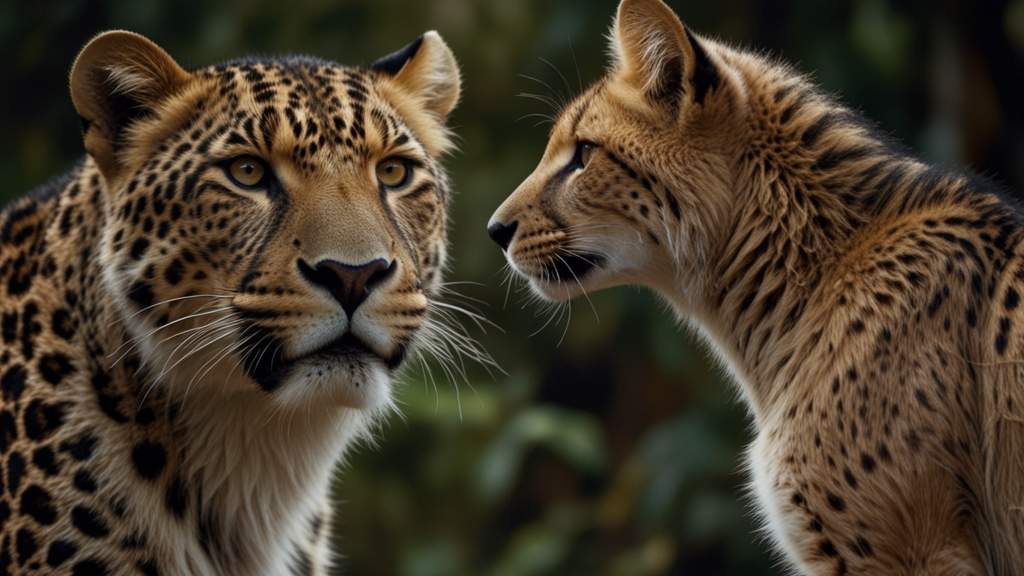The Amazing World of Animal Communication
When we think of communication, spoken and written human languages often come to mind. However, the animal kingdom is home to a breathtaking diversity of communication methods ranging from songs and dances to chemical signals and bioluminescence. Exploring these communication techniques opens up a window into the complex and often surprising ways animals interact with each other and their environments.
Vocal Communication
Many animals use vocalizations to convey messages. Birds, for example, are renowned for their songs. Each bird species has its own repertoire of calls and songs, used for everything from attracting mates to warning of predators. Male songbirds often engage in singing duels to establish territory and display fitness.
Marine mammals like dolphins and whales are also masterful vocal communicators. The humpback whale's song is one of the most complex in the animal kingdom, often lasting up to 20 minutes and audible over vast distances underwater. Dolphins, on the other hand, use a combination of clicks and whistles to communicate with each other, even calling each other by unique "names."
Body Language and Visual Signals
Body language plays an essential role in the animal world. Dogs, for instance, use a combination of tail wagging, body posture, and facial expressions to convey a wide range of emotions and intentions. Similarly, cats have their own set of signals, such as purring and arching their backs, to communicate with humans and other animals.
Certain species go even further by employing visually spectacular methods. Peacocks are famous for their extravagant tail displays, used to attract female mates. Meanwhile, cuttlefish can change their skin color and pattern in an instant, a technique used for both camouflage and communication. They may use vibrant displays to assert dominance or attract a mate.
Chemical Communication
Chemical communication is another critical form of interaction among animals. Insects like ants and bees rely heavily on pheromones to organize their highly structured societies. Ants use these chemical signals to mark trails leading to food sources, alert others to danger, and even to identify members of their colony.
“The air suddenly filled with the sweet aroma of pheromones, signaling to the ant scouts that a rich food source had been discovered. One by one, they followed the invisible trail, a perfect example of the power of chemical communication.”
Mammals, too, utilize chemical communication. Male deer produce strong-smelling substances from glands on their legs, used to mark territory and signal their presence to females. Even humans are influenced by chemical signals, though not as overtly as many animals.
Electrical Signals
Some animals have developed extraordinary methods of communication that go beyond our usual understanding. Electric fish, like the electric eel, generate electrical fields used for navigation, hunting, and communication. Another fascinating example is the platypus, which uses electroreception to detect the electrical signals produced by the muscle contractions of their prey.
“In the murky waters of the Amazon River, the electric eel sent out a pulse of electricity, instantly identifying the location of a hidden fish. A split second later, it delivered a powerful shock, stunning its prey. This masterful use of electrical signals is an evolutionary marvel.”
Conclusion
The animal kingdom’s myriad communication methods reveal just how intricate and varied life on Earth can be. These interactions are not just fascinating curiosities; they are crucial for survival, reproduction, and social organization. As we deepen our understanding of these communication techniques, we also gain insights into our own ways of interacting with the world and each other.
The next time you hear a bird singing or see a dog wagging its tail, remember that you are witnessing a sophisticated form of communication honed by billions of years of evolution, a small glimpse into the amazing world of animal communication.
“Communication is a fundamental aspect of life, transcending species boundaries. From the complex songs of whales to the intricate dances of bees, nature's languages are as diverse as they are awe-inspiring.”











